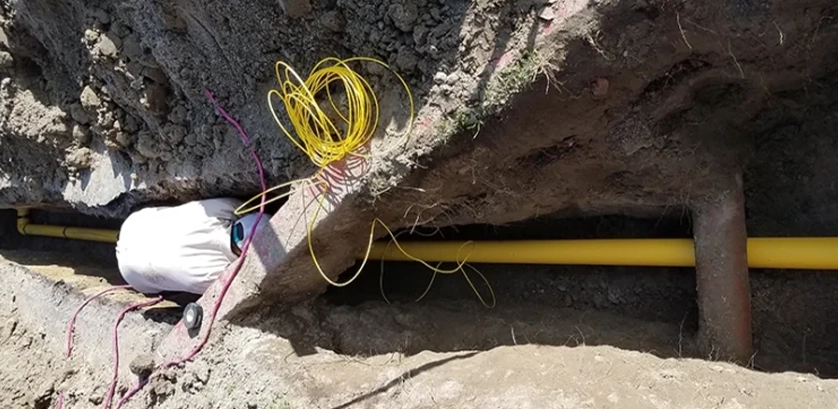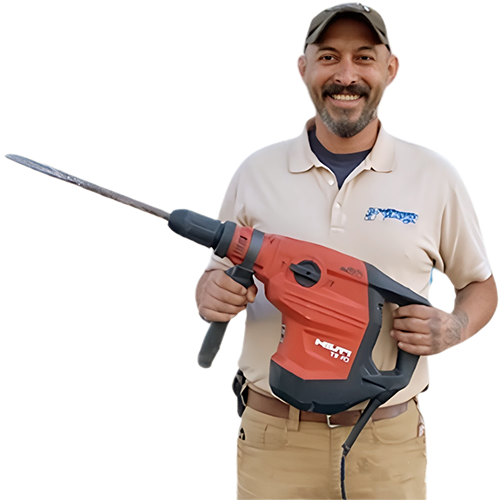Natural Gas Line Installation Fountain Valley

Installing a new gas stove, dryer, BBQ, or water heater? You’ll need professional natural gas line installation in Fountain Valley to keep it safe—and legal. Our team handles everything from planning the route to testing the finished line. We make sure it passes code, works safely, and lasts for years.
Gas lines can’t just be thrown in. The size, material, length, pressure rating—all of that matters. We use coated steel, flex connectors, or PE pipe depending on where the line goes. Whether you need a stub out added in the kitchen or a trench from the meter to the backyard firepit, we’ve done it before.
We’ve been doing gas line installs for over 40 years. Our techs use digital manometers, new test kits, and trenchless tools when possible to make installs clean and fast. You’ll know what to expect before we even start—and we’ll pull permits if needed.
Want the job done clean, safe, and up to code? Give us a Call us (714) 964-3519 or Book Online. We’ll take care of it.
Gas Line Install in Fountain Valley – Outdoor Kitchen Near Talbert & Magnolia
One of our regulars in Fountain Valley called us last spring. He was building a full outdoor kitchen off Talbert and Magnolia, near Los Alamos Park, and wanted to convert everything to natural gas—grill, smoker, even the pizza oven.
He’d already poured the concrete and was worried it might be too late. Luckily, we came out before he started tile work. We trench-routed a 1″ PE gas line from the meter around the side yard, added two stub-outs with shutoffs, and pressure tested the line while he finished framing the counters. No need to tear anything up.
Now it’s one of the nicest backyard kitchens we’ve seen, and everything fires up without propane tanks. He called us again last month for a pool heater hookup.
Common Gas Line Install Types & Requirements
| Installation Type | Pipe Material Used | What We Check Before Install |
| Indoor appliance stub-outs | Coated steel or CSST | Appliance BTUs, line length |
| Outdoor BBQs or fire pits | PE pipe in trench | Depth, distance, regulator setup |
| Laundry room dryers | Short steel flex with valve | Valve location, gas shut-off access |
| Pool or spa heaters | PE pipe, separate shutoff | Load size, pressure, trench depth |
| Whole-home new gas service | Full route design | Meter capacity, all connected loads |
Source: SoCalGas Residential Line Sizing Guide
https://www.socalgas.com
How to Prep Before a Gas Line Installation Visit
A little prep goes a long way—especially for outdoor installs.
For indoor lines, clear space near where the new appliance is going. That could be behind a stove, next to a dryer, or inside a cabinet. Make sure we can access the shutoff area and get tools through any tight spots.
For outdoor jobs, let us know if you’ve got sprinklers or lighting buried in the yard. Mark them if possible. Move patio gear away from the work zone and keep pets inside. Also, hold off on hardscaping or concrete until we see the layout—lines can go in before you finish the surface.
We’ll handle trenching, testing, and city inspections if needed.
DIY Mistakes People Make with Gas Line Installs
Here’s what we see way too often: people install a gas line with the wrong size pipe. Then the appliance doesn’t get enough pressure, so they try to “fix” it with a larger connector or bypass the regulator. That’s not only wrong—it’s dangerous.
Other times we find uncoated pipe buried in dirt, or someone used indoor flex line outdoors. Even worse, some jobs skip permits entirely and fail inspection.
Gas lines aren’t the place to guess. You need licensed tools, load calcs, and materials that hold up. Otherwise, it’s getting ripped out later.
Other Services Related to Gas Line Installation
- Natural Gas Leak Detection Fountain Valley
- Natural Gas Line Repair Fountain Valley
- Move a Natural Gas Line Fountain Valley
- Natural Gas Auto Shut-Off Valve Fountain Valley
FAQs – Natural Gas Line Installation Fountain Valley
It depends on the distance, access, and what appliance it’s for. A short line in the kitchen costs less than trenching for a backyard firepit. We give pricing upfront after a site check.
Yes—almost always. Whether it’s a simple stub or full outdoor install, the city usually wants a permit and pressure test. We handle all of that.
We use coated steel for indoor lines and PE pipe (yellow poly) for buried outdoor lines. Everything is sized and installed to code.
Absolutely. That’s one of our most common installs. We’ll size the line, trench it, and install shutoffs and regulators as needed.
Small lines can be installed in a few hours. Larger outdoor jobs take a day or two, especially if permits or concrete cuts are needed.



